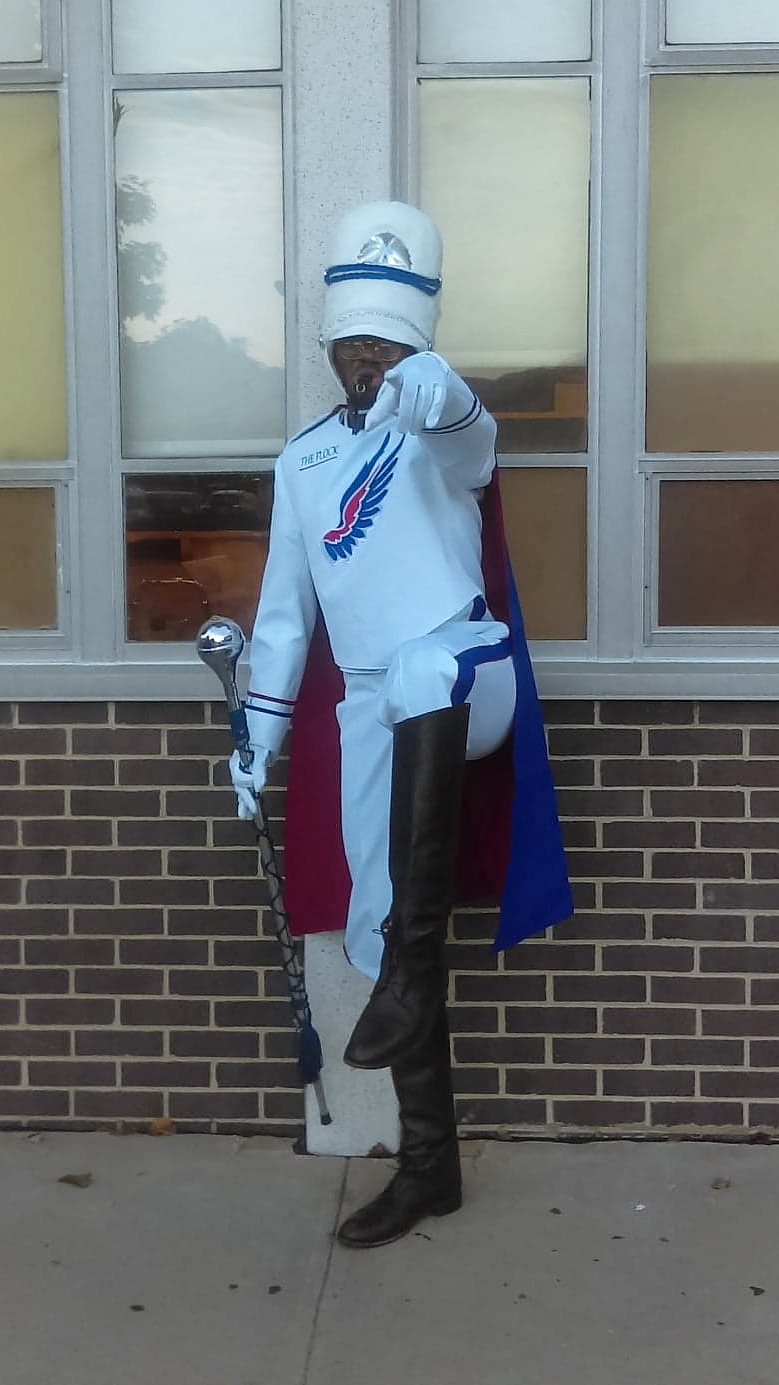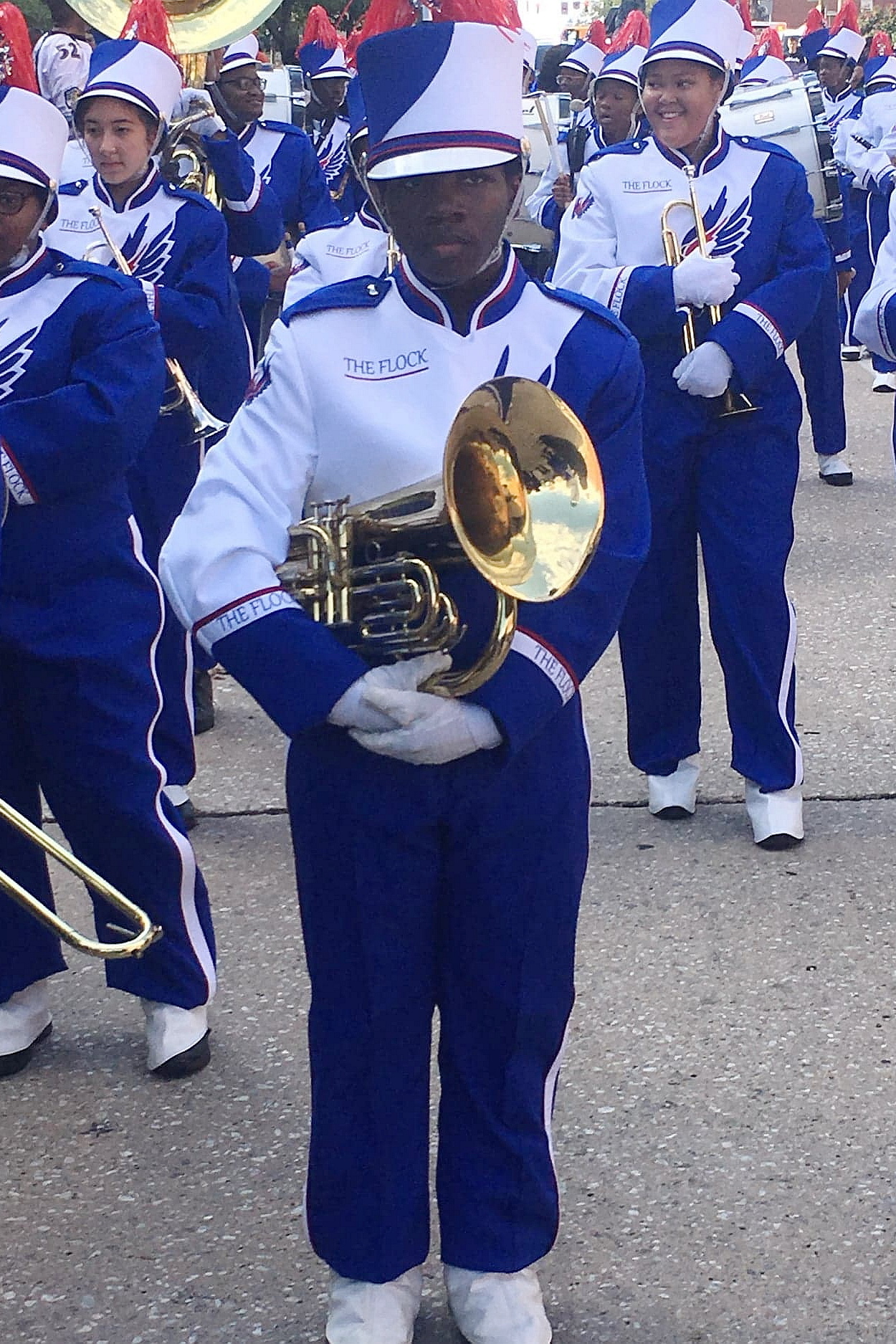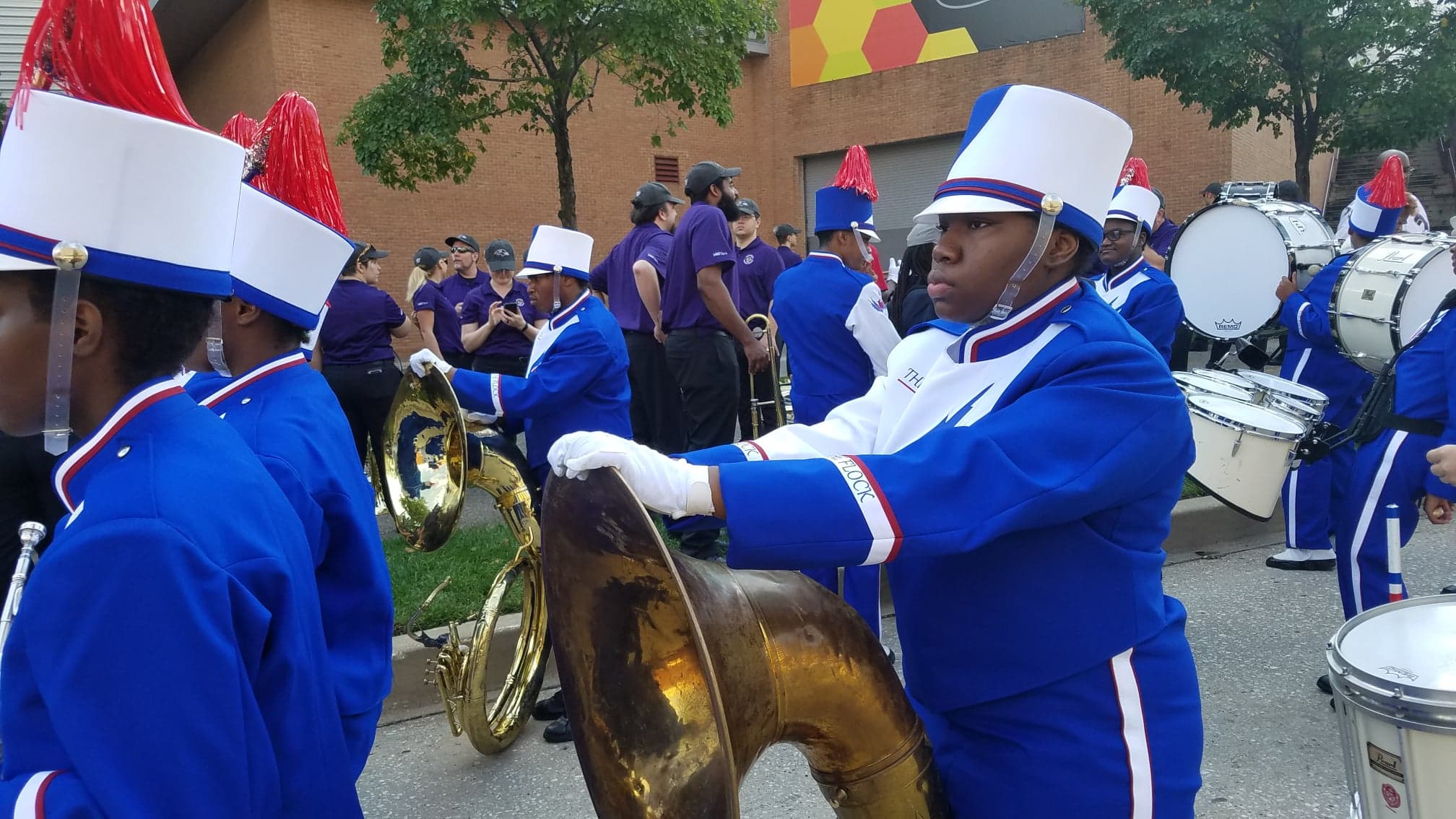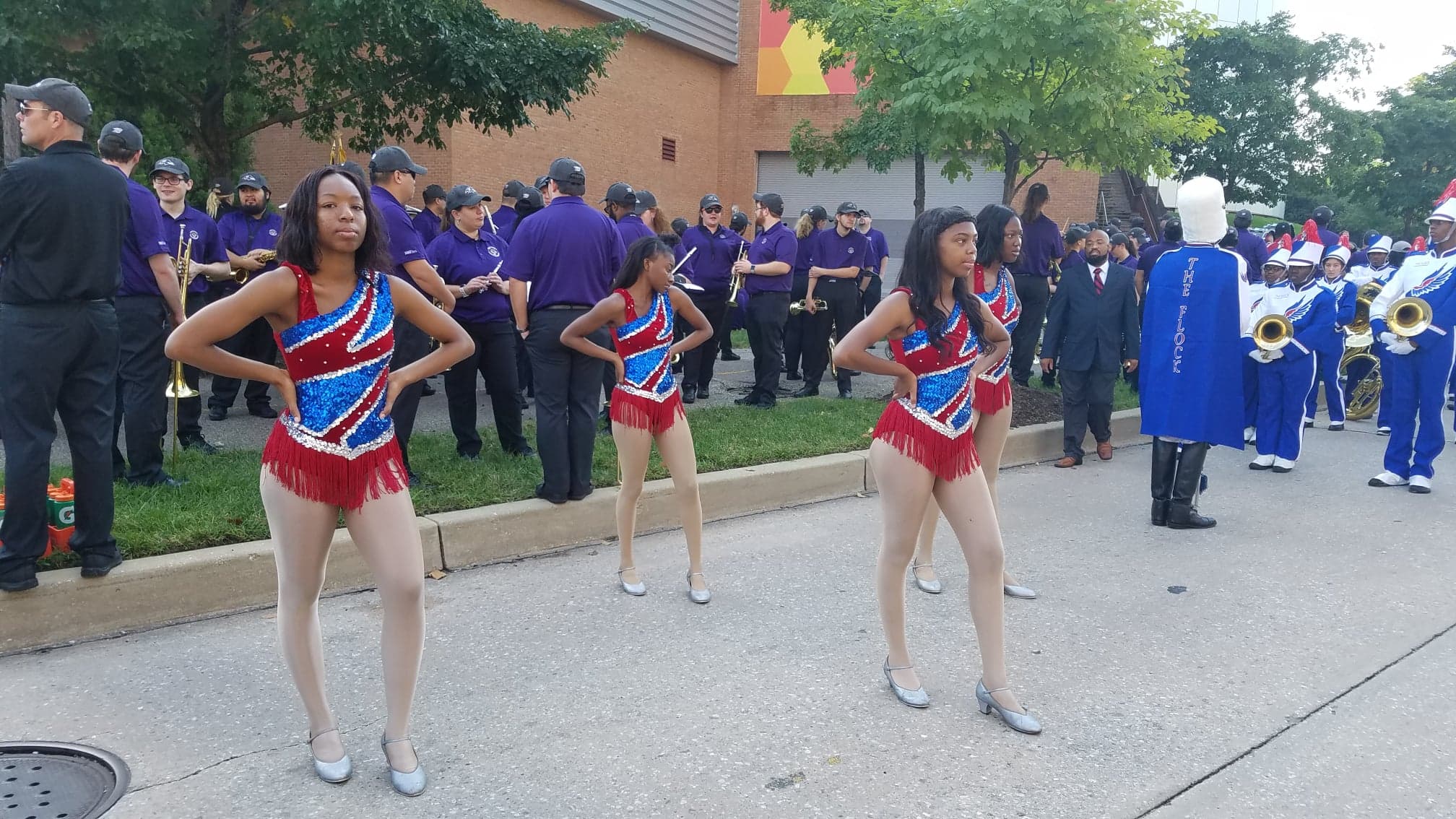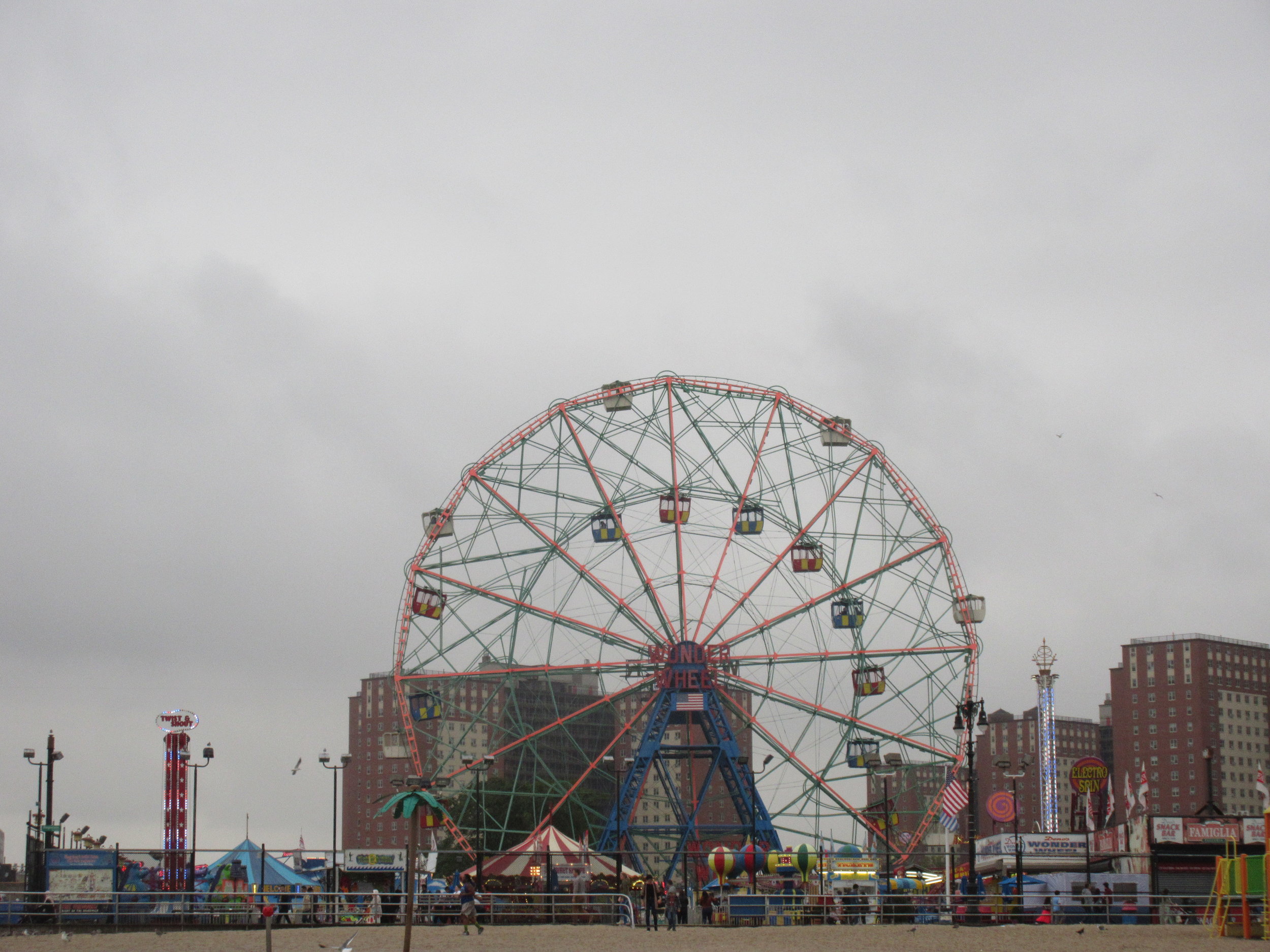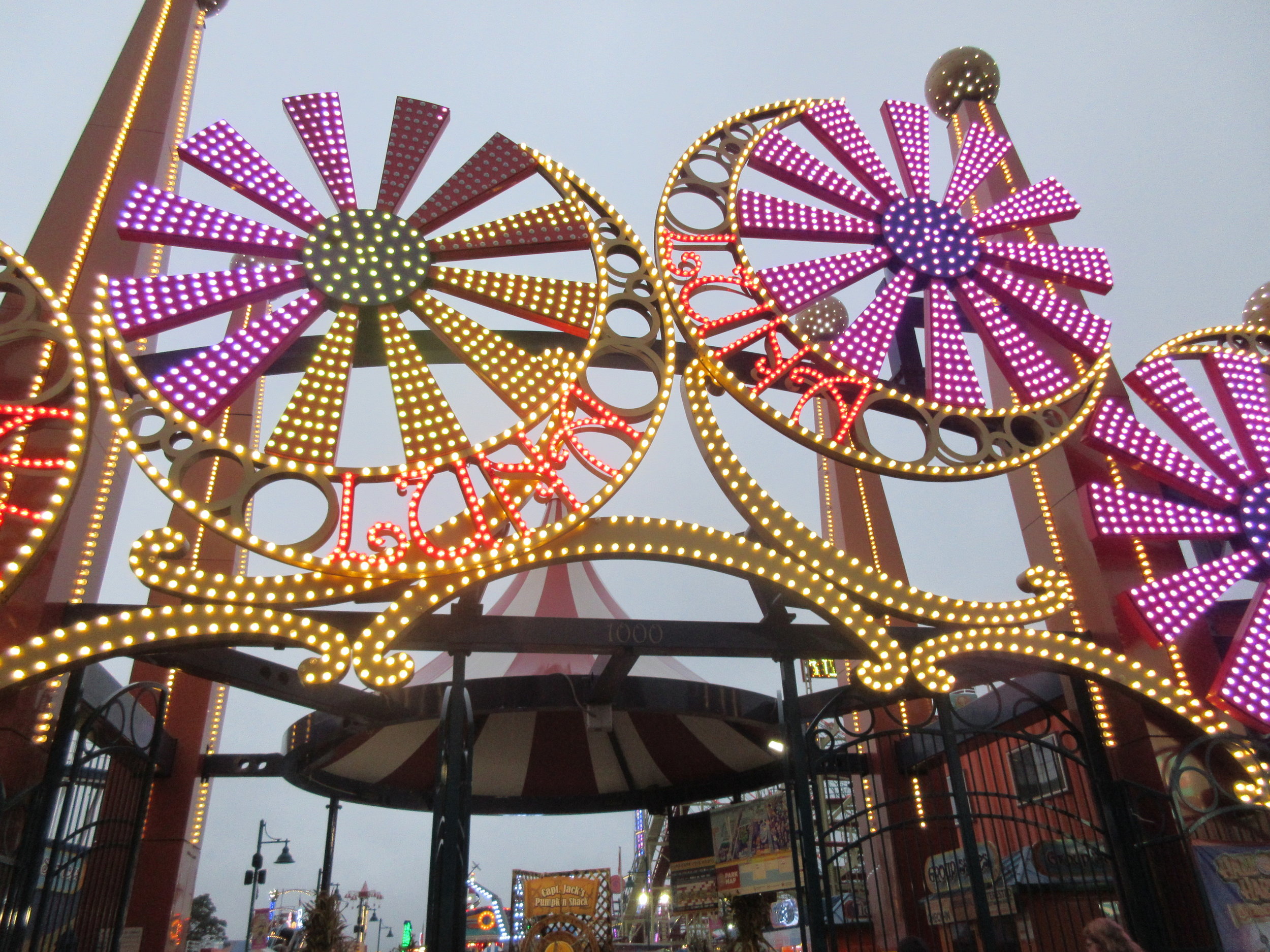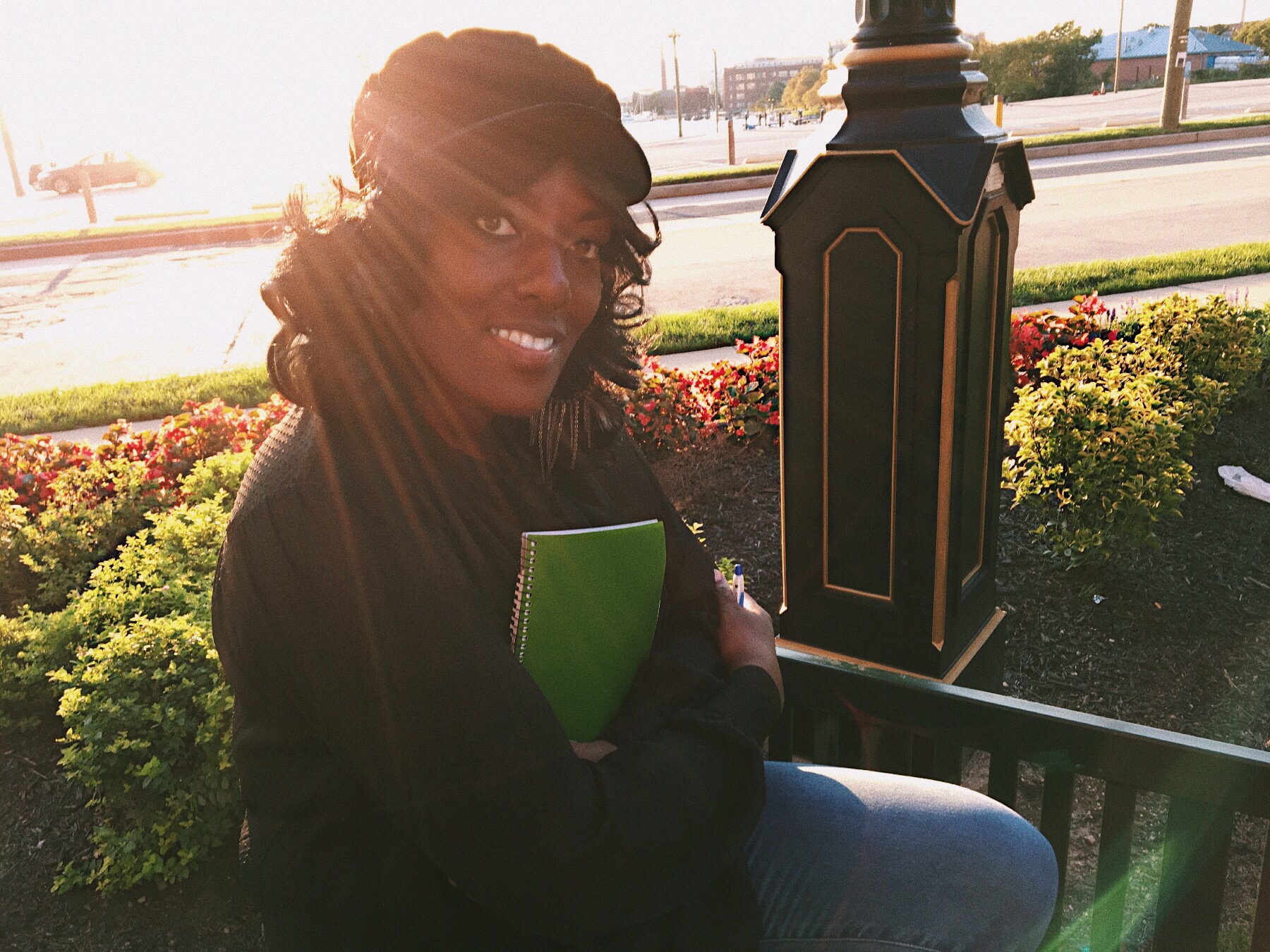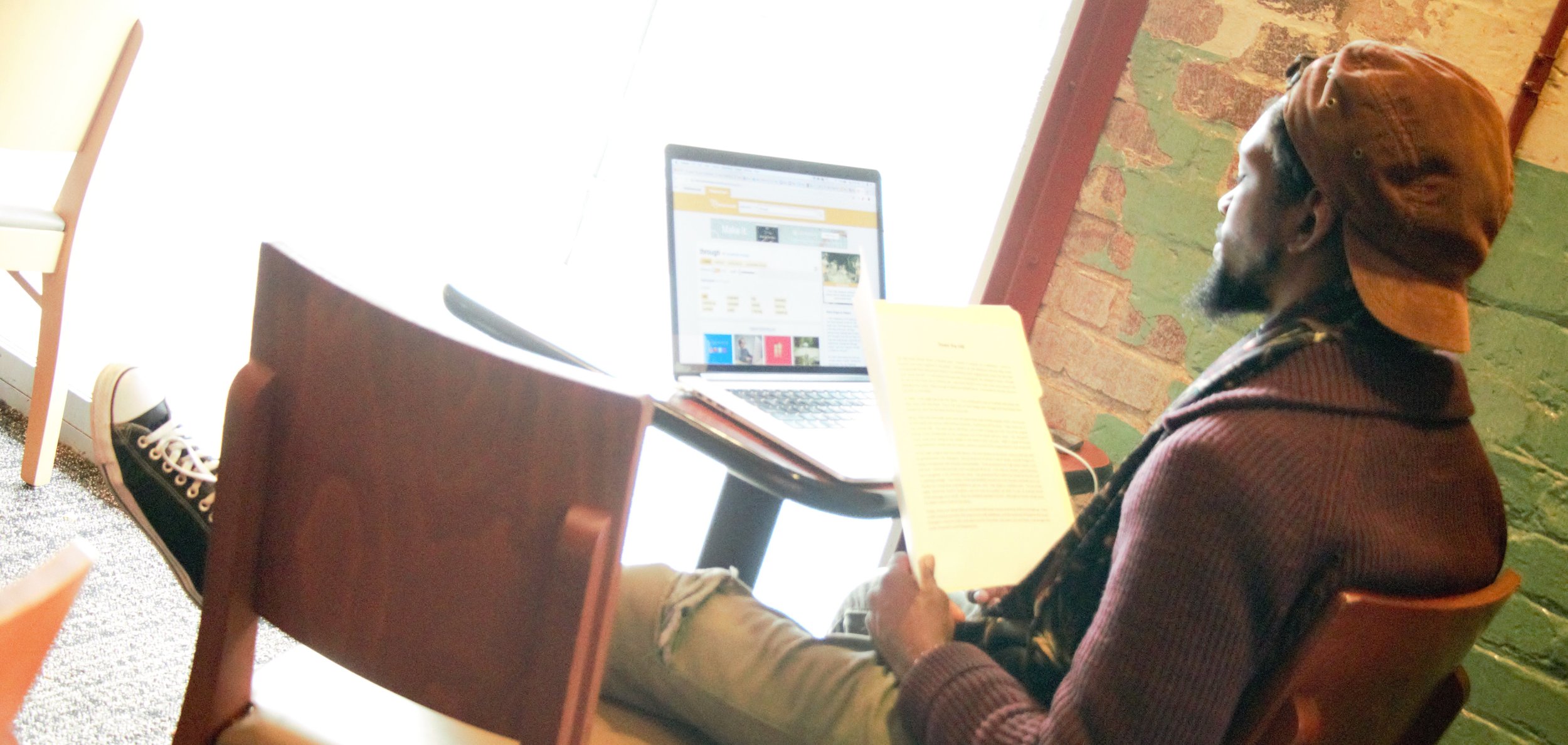Alexis Gibson
CARS
Since I was young I’ve always been interested in cars. I get excited when I see a nice car, like getting a new pair of shoes or a fresh new hairstyle. I like the sound of an engine when it revs. I always wanted to know how they functioned, how to make and fix them. I wanted to experience how it felt to drive one. I like fast cars, the way they move, and I especially love the way they look. Today cars are so much more than what they started from. The ability to customize cars and make them into what you want is what makes them beautiful.
The first car: a seat with two large bicycle-like wheels in the back and a small one as the anchor in the front. In 1885 this automobile was made by Carl Benz. This car ran on a high-speed one-cylinder four-stroke internal combustion engine. Its top speed . . . 16 km/h.
A couple days ago I went to a car show which featured a variety of old fashioned cars. I was so amazed because it was over 50 cars there that were old yet still functioning. One car I saw at the show had an engine installed giving it 350 horsepower. These old fashioned remodeled cars are interesting due to the ability to bring more details and power to it than it had before.
Most of them had updated engines and some had the same old school engine. They all favor each other in a way, but featured details that made them different.
Some cars had a theme or a story. There was a Dodge with a Monster’s Inc. theme. It was all green, even the L.E.D. lights and green stuffed monsters. It had a street name called “GREEN MONSTER Dr.,” and a license plate that said “SUBL1ME,” which made the car stand out to me.
Now in the 2000’s cars lack this variety. You see different brands, but they all look like each other. I like old-fashioned cars because when they would come out they would be different in their own way.
Cars are an amazing invention from their unique structure to how they function. I would love to build my own car and make it different from everyone else’s in the world; a car where only I know how to work it. In the future I want to remodel cars for the excitement of it and to make people happy.
If I could have any car in the world it would be a 2018 Dodge Challenger, sky blue with red rims. I have my learner’s permit for a driver’s license and when I get it I hope to drive everywhere, the road is peace for me.
Douglass Robert Harris IV
RALPH MOORE
During my first interview with Ralph Moore, I learned that his first profession was as a teacher.
A man of strong beliefs, Moore bases his convictions on facts and knowledge. Many of these came from his involvement with the Civil Rights movement in Baltimore in the 1960s. "I based my convictions on the people around me," said Moore. "I wanted to be a part of something other than myself."
Ralph Moore
Ralph grew up at 1002 West Mosher Street in the Harlem Park neighborhood in West Baltimore. His parents were Ralph Moore, Sr. and Lorraine Moore. From elementary to middle school, he attended St. Frances Academy, at the time an all-black Catholic school on East Chase Street.
After the 7th grade, he was offered a full scholarship to Loyola Blakefield in Towson and became one of eight African-American students in his class.
Ralph's interest in the Civil Rights movement of the 1960s began when the Rev. Dr. Martin Luther King, Jr. gave his "I Have a Dream," speech on the Mall in Washington, D.C. on August 28, 1963. His mother would not let him attend the speech - he was only 11 at the time and she feared for his safety - but he listened on the radio. "It was fascinating," he said, noting that he had long admired Frederick Douglass. "I became engaged [with the movement] at a young age."
From King, he became enamored of Malcolm X because of "the strength and clearness of his message," Moore said. "Non-violence is one thing and self-defense is another."
His other heroes in high school included Muhammad Ali, members of the Black Panthers (“I was a wannabe Panther,”) said Moore and the stars of the Motown record label. He especially liked The Temptations and their protest song, “Ball of Confusion.”
Douglass Robert Harris IV
In the world of literature, Ralph admired the poet Maya Angelou and the essayist and author James Baldwin. Baldwin lectured at Hopkins when Moore was studying there after Ralph complained that all of the authors coming to speak to students were white.
Moore said that Baldwin was a small man and remembered that after the lecture the excited crowd lifted him off his feet.
Today, Ralph teaches people of many ages at Baltimore City Community College. He teaches GED classes among other subjects. Also, he is very good at math and drills his students in multiplication tables.
Ralph also started a Peace Camp for kids. Enrollment is at 110 kids, and the camp is free. He feels that his purpose in life is to “tell the truth as much as he can, to teach where and whenever he can, and loving people as much as he can.”
“My dream for this country is love,” said Ralph. “It’s a feeling and an action we can use to help live the best life we can. We can make it easier for everybody in this country.”
Brent Hudson
CAPOEIRA ANGOLA
Capoeira—the Afro-Brazilian mixed martial arts—saved my life.
I began my journey in Capoeira in 2017 after facing many heavy challenges as a 26-year-old African-American man from Baltimore. I felt disconnected from the culture and history of those around me.
Capoeira is an Afro-Brazilian Martial art that is a combination of natural elements of dance, acrobatics, and music. There is a dispute about whether it began in Angola or Brazil. The story of Capoeira's ritual practices began in Angola, in the 16th century when the Portuguese captured slaves from West Africa and used slavery (link) to build their economy. When it was taken to Brazil (also a former colony of Portugal), there were a lot of challenges due to cultural differences between the different Angolan tribes that were brought together as slaves.
The ritual dance of Capoeira became a tool for combat and survival among the slaves. During slavery, the Portuguese masters were not aware of Capoeira's significance. After slavery, when it was discovered to be a form of rebellion, it was banned but persisted.
The Brazilian government feared the ex-slaves would join forces and use Capoeira to overthrow the government. Anyone caught practicing it was arrested or tortured. Sometimes they were mutilated by the police. The music has been carried around the world and I discovered it in Baltimore.
I have dealt with poverty, inequality and have been a victim of gun violence as a bystander. Singing and listening to the music of Capoeira has helped me deal with depression that came from these experiences.
It's a form of healing that has helped me a lot, especially finding solutions to problems in life. Through Capoeira, I was able to begin to address my mental health, self-confidence, and self-expression. I continue to improve on my weaknesses - such as the ability to listen -- through the physical demands of the art form. As a result, it helped me to find balance in my life.
The richness in the music of Capoeira comes from stories of historical battles between good and evil from the days of slavery in Brazil. It remains a struggle people face every day. It seeks to transform the energy of depression and failure into success.
It came to me by chance when I was dating a woman who was studying Capoeira. I didn't have time to attend with her but the few times I did, the teacher took an interest in me. Once I decided to make time for the practice, I was given the responsibility of opening and closing the building. I continue to keep my commitment to the practice, both as a personal pursuit and helping to promote the movement. Capoeira continues to be a social tool for resistance and empowerment around the world; including community building, social equality, and diaspora studies.
Capoeira will teach you to be open to what life brings. It is also a terrific form of exercise, particularly in the games we play based on ancient rituals. It is known for skills of deception, power, speed, timing, and leverage using kicks and spins. Practicing the movements can be challenging at times and with an open mind one may begin to unravel the mystery of the body and soul.
In Baltimore, Capoeira can be found through the local chapter of FICA—the Fundação Internacional Capoeira Angola Foundation (link). Its mission is to maintain , promote and perpetuate the legacy of Capoeira Angola as an African Brazilian tradition.
And its objective is positive social transformation in the greater Baltimore area through education and performance.
I would not be the person I am today without it.
Antonio Lewis
THE MARCHING FLOCK
The day started with me waiting for two buses that were both 25 minutes late to get me downtown to the marching band that I work with. Downtown, I ran from City Hall all the way south to the Science Center at the Inner Harbor.
When I got there, the Poly-Western Band "AKA The Marching Flock" -was in the parade rest position. Soon, each section of the band broke off to warm up. When the band director got everyone back into parade formation, he had them run through each of the songs they would play in the parade.
Then, the Baltimore Ravens marching band began to warm up next to us. As the Ravens band went through their repertoire, each section of The Flock had fun picking up on the other band's songs.
Right before the parade was about to start, the Flock got into "show time" mood. I joined the other spectators and parents to form a perimeter around the band so no one could cut through their formation.
When band director Krystal Williams began to speak, everyone got quiet and listened. Outside of "director mode," Ms. Williams is very loving and caring, but now she is no-nonsense and tough. The band instinctively knows what she wants to be played and when. The dancers and the flag twirlers are not always with the band but when they get together at practice they know exactly what routine goes to which song. Everything comes together during practice. It fits exactly like pieces in a puzzle.
When the parade began to move, The Flock started their marching cadence. A block down the parade route the band broke in to "In the Air Tonight" by Phil Collins, one of many old school songs in their catalog.
As the band went down the street, I noticed the crowd was excited and dancing to the music. All along the parade route the crowd called out "Go Flock" and different band members' names. The parade ended in front of City Hall and the crowd was bigger and louder. The band was really pumped up.
When it was over, the band boarded the school buses with the drumline players stacking their drums; the tuba players put their instruments in their cases with other instruments in the back of the bus.
In the band room back at Poly, The Flock was told what the schedule was for the next few days. The drum line had their own meeting and everyone enjoyed a lunch provided by the City of Baltimore.
It was unique, exciting, and more than a lot of fun for everybody.
Aurora Matthews
CONEY ISLAND
I hadn't been back to Coney Island in five years. On September 23 of this year, I wandered off the F-train into the damp street. The subway station lets you out on the corner of Surf and Stillwell across from Nathan's, proudly boasting their world-famous frankfurters that have fed tourists and locals alike since 1916.
Walking down Surf Avenue, you see a mix of old and new attractions best highlighted by the IT'SUGAR directly across from Nathan's founded in 2006. The sugar store—which mostly sells sweets—is a stark contrast to Nathan's, which has been in business for 101 years.
I entered the amusement park for which Coney Island has been famous since 1895, when "Sea Lion Park" opened there. Once in the park, the blending of new and old becomes even more apparent. My first stop was a concession stand for a quick snack, funnel cake from Deno's.
This stand had been there since Deno Vourderis set up shop in 1950 and has remained for many years, becoming a staple of one of Coney Island’s biggest attractions—the Wonder Wheel Ferris Wheel opened in 1920 after two years of construction. Wonder Wheel Park, formerly known as Ward's until William J. Ward fell upon hard times.
Deno offered to buy Ward's share of the park in 1981. Vourderis followed this up by buying the Wonder Wheel itself two years later, something he told his wife Lula he'd do on her behalf thirty years before so he could offer it to her as a wedding ring. He wanted everyone in the world to know how much he loved her. A ring that would never be lost.
Knowing this history made the conversation I had with the bored teenager tasked with operating the ride almost comical. I approached the young man who greeted me half-heartedly and offered an explanation as to why the ride wasn't operational. He also said he "wasn't okay" with giving me his name.
His demeanor didn't change much once I explained that I was there to speak with him. He'd only been working there for two months and was indifferent toward the job and the park itself. He'd never been to the park before getting a job there and any enchantment the place may have offered seems to have left him after the third day. He enjoys the food and the occasional roller coaster ride but beyond that nothing.
After being chased down the boardwalk by what seemed like an entire colony of seagulls aggressively pursuing my funnel cake, I spotted a man who was down on one knee in front of a misty-eyed woman. They were making one of the biggest decisions of their lives—marriage.
I intervened with the much smaller decision of whether or not they would let me interview them. Like countless others, this is where the couple—Jonathan Greye and Victoria Coates—had their first date, just walking down a Boardwalk that has been there since 1923. Even on an unsavory day for weather, Coney Island invoked a certain warm feeling in me, one that hasn't left even in the five years I've been gone.
Looking at the amusement park from across the beach - the whole place filled with tourists and locals, people smiling and laughing through the drizzle and looking at my own family splashing in the water like it was a bright summer day—reminded me of why I chose to come here.
It's home.
Theron Conner and Shadrack Marshall
Michael Pugh
SHADRACK MARSHALL
Shadrack Marshall, is a 21-year-old singer born in Philadelphia and raised in Delaware. I met him when I walked past him at the Creative Alliance during a break in the Pay Attention journalism class.
Shadrack was at the arts center to support a movie his younger brother—Theron Rhyno Conner—was making. They were working on casting when I met them and I auditioned for a part. I did not hear back from them.
One day, Shadrack hopes to be a big-time singer. He is working hard toward his goal with passions for both music and his two children, both boys. He would like to see his kids grow up with wealth and opportunity. When his success comes, Shadrack said he would help others through collaboration, which he called "collabs."
"My biggest inspiration has to be my brother, seeing him out here working hard to achieve what he wants in life," said Shadrack, who said his brother had a big part in raising him, "watching him is what gives me the drive to succeed."
Shadrack said the hardest part about making it as an entertainer is find the free time to pursue new ideas in both music and business. He wants to start his own record label in Philadelphia.
Michael Pugh
Tavon Shipley
AN EVENING IN POWER
NIA JUNE
One Friday, I was off and wanted to find something to do. I stumbled upon a flyer on Instagram about an open mic event called Befreefridays. I had heard about the event before but never had the opportunity to attend. I told myself that night I would go -- not only to get out but to see Nia June, someone I knew from college. One semester, Nia and I had taken an English class together. I had no idea that June was a poet but it came as no surprise because she was an excellent writer and excelled in our class.
I was nervous on the way to the event. It was the first time in 2 to 3 years that I had attended an open mic. But with my nervousness came an overwhelming excitement. I couldn't wait to see Nia perform.
The event was held in downtown Baltimore at the Eubie Blake National Jazz Institute and Cultural Center on Howard Street. While in the elevator to an upper floor, I couldn't stop thinking about the man at the reception desk. An older, dark-skinned man with a uniquely shaped white beard, he looked like a village shaman. It was as though every hair of his beard told the story of his long life.
On the fourth floor, I paid a $10 fee and went in to find a seat. I chose to sit at a table close to the stage to be as close to the action as possible. The DJ played a variety of songs. Mainly classics by Lil Wayne. It happened to be his birthday and the release day of Wayne's long-awaited Carter V album. The evening became not was not only a night of poetry but a night of celebration for the many Lil Wayne fans in the audience.
An hour passed and the show began with a few poets, some musicians, and a comedian followed by more poets. One after another, the performers seemed to get better as the night went on. My excitement was growing as the feature performer came on and I was eager to hear what Nia June had for us. Nia came to the stage, her dreadlocks held in place by a beautiful wrap. She wore what looked like a sundress and a long flowing cardigan. Her skin glowed from the lights above her.
Nia smiled and jumped into it. As she performed it's almost as if she left her body and allowed her words to use it as a vessel. Eyes closed, mouth wide it's as if she was an angel. Singing to the heavens a tune in the form of poetic justice. Out of the four poems she performed, the one that made the night for me was called School Daze, the same title as the 1998 film by Spike Lee. This poem was about the Baltimore City Public School System and it was raw truth. As a product of Baltimore Public Schools, I was at a loss for words as she described what I had experienced accurately and unapologetic as only a poet can.
At the end of her set, Nia opened her eyes and smiled again, placing the ferocious poetic beast the room had just encountered back in its cage. After the show, I greeted my old friend and told her how amazing I thought she was. She thanked me and I hurried to the elevator, thinking as I went down about how I'd been part of something more than an open mic.
The evening was not only a night of poetry, but an evening of power.
Nikima Smith
HONEST TRUTH: THE KIMBERLY CAMPBELL STORY
Kimberly Campbell discovered writing was healing. Campbell, a 45-year-old Baltimorean, is my mother. I interviewed her about her journey to becoming a writer. Campbell said, "Writing for me is pure therapeutic energy, it takes me to a place I never knew existed. Some people have a therapist, a friend, or even a family member they can vent to. I decided that my audience would be the world if it was willing to listen."
"When I wrote my first book Gypsy Eyes, I was going through hardship. I was told that a gypsy was a person who moved from place to place." She could not decide where she wanted to be or what she wanted to achieve, "At that time in my life the word gypsy described me perfectly. It was never a plan of mine to constantly relocate; however, I believe I was just in search of something unattainable. What I learned from writing is to never give up. No matter what life throws your way, keep going."
After the births of her children, the doctor told her that she would be faced with the misfortune of having cervical cancer. When you get a health scare it changes who you are and how you live. She wrote a bucket list containing everything she wanted to experience, places to see, and memories she wanted to create.
Campbell said that when she wrote her second book in 2014—Pure Fruit: Chloe’s Betrayal—it was “a comeback” for her. “I am trying to find time to write part two of Chloe; however, it hasn’t been a great success.” Taking care of a family as a single parent makes it hard to complete my books. Most of the time I would write while the children were sleeping or out of the House.
When asked what motivates her to write. She replied, “My children . . . I promised myself that I would leave a legacy behind for them. I taught them that materialistic things will never equal the value of what the heart provides. I want them to remember me for the woman/mother that I’ve been to them.”
“I told myself that I would not continue this journey of instability,” she said. “I believe in some ways writing saved me. I was lost in a world where every man was for himself. Sometimes it takes a village to find a solution. I didn’t have that village”.
Campbell shared a few tips about how she comes up with her ideas. “They come to me at the most unforeseen times. I could be in a movie theatre watching a feature, or at a café enjoying a caramel macchiato.” Listening can lead to some of life’s best lessons and creative ideas.
She seldom gives her books away but makes sure the price is cost-efficient. Her books can be purchased online.
Being the daughter of a writer has been a great experience in that I’ve learned to put things in perspective which has helped me with my own writing. It has made me think twice about what the meaning of life really is.
Destiny Thomas
A BLESSING
Being a part of BYFA has been a big blessing for me. Having the opportunity to learn the difference in between real and fake news has opened my eyes.
It was a cool learning experience for me because we got to meet awesome people and interview them about their life and their experiences. "Pay Attention" brought me out of my comfort zone because I was able to share some of my technical skills in the class bring out the bright side of the team.
Being able to capture memories on film and in words and seeing them grow over the weeks has also had a big impact on me. This class has taught me how to analyze and ask questions that make one wonder what else is possible. It also sparked interest in things that I never thought would grab my attention.
I now have the urge to know more than just what someone puts in front of me. And it has guided me in the direction of the next steps I need to take to have a realistic career. It gave me an extra push to meet and know more people.
I am grateful to have been a part of it.
Photo Book Available: "Pay Attention!": Practicing Close Observation with Camera and Pen












